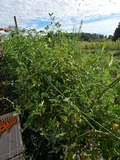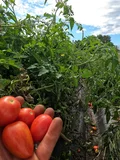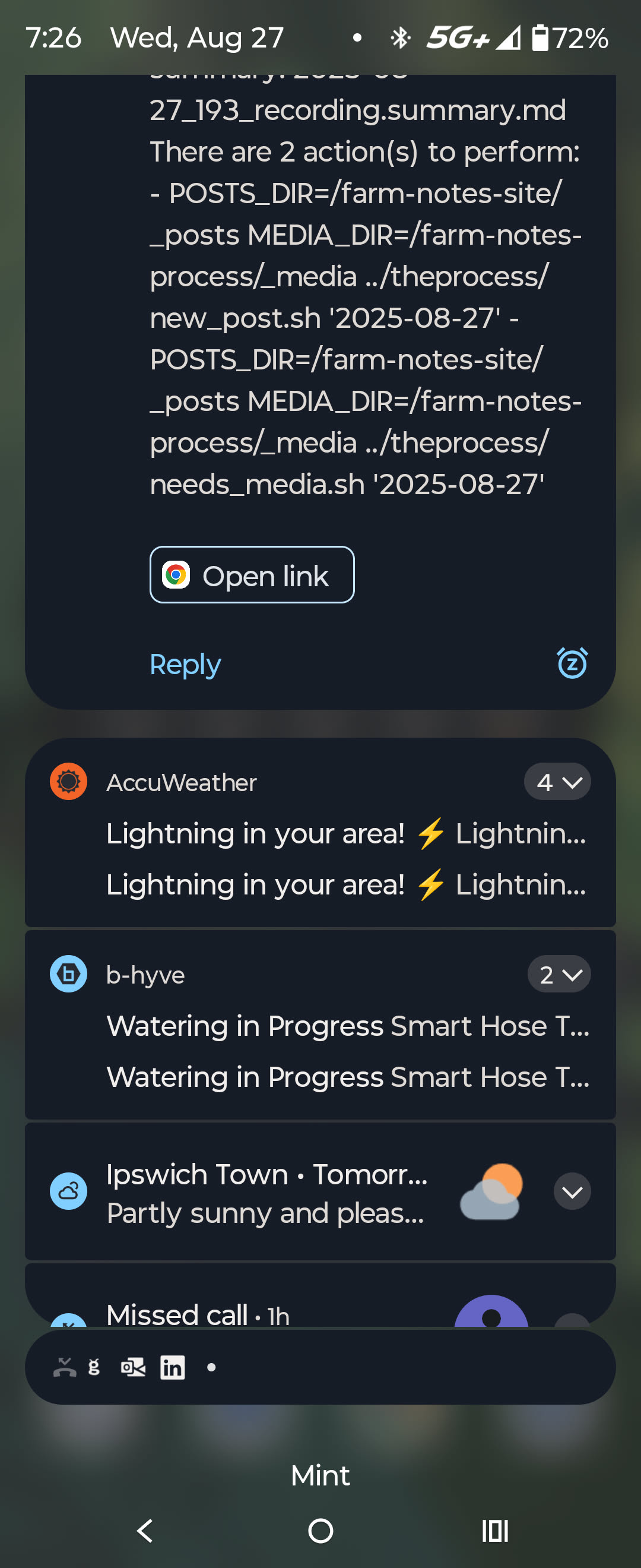TL;DR
We harvested cherry tomatoes, peppers, and scallions before packing up for markets. During afternoon animal chores, I got hit by a hailstorm…
…which I will gladly show you now what that looks like in the video below:
Next time I get the sense that there might be weather, I’ll check how quickly it plans to get here and then also leave. Had I waited about 15 minutes in the barn, I would have avoided it altogether. But then where’s the fun in that, and what would I have learned?
A Piggy Paradox
As a consumer, I like sausage and bacon. But after taking care of the pigs, my position is that I wouldn’t have them on my own farm. The paradox is that if this were the policy on this farm, I wouldn’t get the experience to know that.
In some ways, pigs are smarter than dogs and you can see their little souls when you look them in the eyes, but we still grow them like meat vegetables. Granted, this farm has a nice big yard area in the forest for them to roam around in. We feed them vegetable ‘scraps’ that are so in-tact but just not customer-sellable that even I would take some of these home and dehydrate them for my own use. They have ample water and safe shelter and are very healthy. But ultimately they are like lettuce heads that get chopped and sold away.
If you like your meat, I would recommend trying to take care of an animal yourself. It’s a great way to understand the value of food and the impact of our choices.
A Bee’s Paradise
This place is teaming with bees. Of course we keep them around the farm for pollinating the many flowering crops we plant, but they don’t stop there. Even the weeds and wild flowers are game to the bees.
As a farmer, I understand now more than ever before the importance of bees and the vital role they play in our ecosystem. That my father-in-law kept bees for many years and I didn’t go up to see them with him now seems a shame. Mostly, I just don’t like getting stung. I was usually too busy on a computer or running around taking care of the kids on our visits all these years to do so. Maybe honey processing this year will help me get over that hesitation.
AI Summary from Field Notes
Looking at the automated AI-driven summary from today’s audio notes, it isn’t that wrong per say to suggest avoiding field work during severe weather conditions. In fact, I should have checked the weather and radar when we felt a surprisingly cold breeze come through the barn while scallion bunching and then again when I saw the first bit of dark clouds over the trees on the horizon.
Summary
Main Themes:
- Daily Farm Operations: Harvesting, cleaning, and preparing crops for markets.
- Weather Impact: Encounter with a sudden hailstorm, highlighting the unpredictability of weather in farming.
- Adaptation and Learning: A new intern’s experience navigating farm tasks and unexpected natural events.
Activities Performed by the Intern:
- Washed buckets and prepared for harvest.
- Harvested: purple peppers, cherry tomatoes (sun golds), red fire tomatoes, slicer tomatoes, and peppers.
- Cleaned harvested produce at the barn.
- After lunch: harvested scallions, sorted them, and packed vehicles for markets (Gloucester Market and a market switch).
- Performed chicken watering chores.
- Experienced a sudden hailstorm (peanut-sized hail) and considered staying in the barn.
- Recorded the storm on a GoPro.
New Things Not Yet Encountered:
- First hailstorm as a farmer: The intern’s initial experience with severe weather on the farm.
- Hailstorm impact: Understanding the potential damage to crops and the need for weather preparedness.
Questions and Future Research Areas:
- How to mitigate damage from hail or severe weather (e.g., crop protection, shelter).
- Importance of real-time weather forecasts for farm operations.
- Impact of storms on crops (e.g., peppers, tomatoes).
- Best practices for working in extreme weather conditions (e.g., shelter, timing of tasks).
Suggestions for Future Actions:
- Document Weather Events: Continue recording weather events (e.g., hail, thunderstorms) for future reference and analysis.
- Improve Weather Planning: Use weather forecasts to adjust work schedules and prioritize tasks during storms.
- Develop Crop Protection Strategies: Explore methods to protect crops from hail (e.g., nets, shelterbelts).
- Review Storm Impact on Farm Operations: Assess how the hailstorm affected crops, livestock, and equipment for long-term planning.
- Enhance Safety Protocols: Establish guidelines for working in severe weather, such as avoiding fieldwork during storms.
This summary captures the intern’s day, challenges, and insights, emphasizing the need for preparedness and adaptability in farming.
Part 1
Main Themes:
- Daily Farm Operations: Harvesting, cleaning, and preparing crops for markets.
- Weather Impact: Encounter with a sudden hailstorm, highlighting the unpredictability of weather in farming.
- Adaptation and Learning: A new intern’s experience navigating farm tasks and unexpected natural events.
Activities Performed by the Intern:
- Washed buckets and prepared for harvest.
- Harvested:
- Purple peppers
- Cherry tomatoes (sun golds)
- Red fire tomatoes
- Slicer tomatoes
- Peppers
- Cleaned harvested produce at the barn.
- After lunch:
- Harvested scallions
- Sorted scallions
- Packed vehicles for markets (Gloucester Market and a market switch).
- Performed chicken watering chores.
- Experienced a sudden hailstorm (peanut-sized hail) and considered staying in the barn.
- Recorded the storm on a GoPro.
New Things Not Yet Encountered:
- First hailstorm as a farmer: The intern’s initial experience with severe weather on the farm.
- Hailstorm impact: Understanding the potential damage to crops and the need for weather preparedness.
Questions and Future Research Areas:
- Weather Preparedness: How to mitigate damage from hail or severe weather (e.g., crop protection, shelter).
- Weather Monitoring: Importance of real-time weather forecasts for farm operations.
- Impact of Storms on Crops: How to assess and recover from hail damage to crops (e.g., peppers, tomatoes).
- Farm Safety: Best practices for working in extreme weather conditions (e.g., shelter, timing of tasks).
Suggestions for Future Actions:
- Document Weather Events: Continue recording weather events (e.g., hail, thunderstorms) for future reference and analysis.
- Improve Weather Planning: Use weather forecasts to adjust work schedules and prioritize tasks during storms.
- Develop Crop Protection Strategies: Explore methods to protect crops from hail (e.g., nets, shelterbelts).
- Review Storm Impact on Farm Operations: Assess how the hailstorm affected crops, livestock, and equipment for long-term planning.
- Enhance Safety Protocols: Establish guidelines for working in severe weather, such as avoiding fieldwork during storms.
This summary highlights the intern’s day-to-day responsibilities, the challenges of weather, and the need for preparation and adaptation in farming.
[end of post]
Enjoy Reading This Article?
Here are some more articles you might like to read next:








